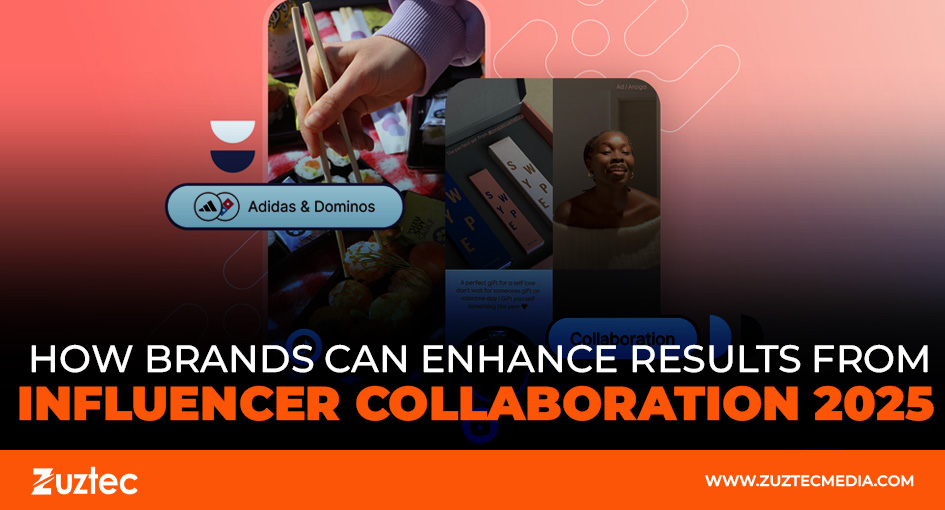
How Brands Can Enhance Results From Influencer Collaboration 2025
Influencer marketing has evolved into a vital component of digital advertising, with more brands investing in creator partnerships than ever before. As social media platforms expand and content creation tools become more sophisticated, influencer collaboration has emerged as a powerful way to engage consumers and drive conversions. Looking ahead, influencer collaboration 2025 is expected to bring more personalization, AI-enhanced targeting, and deeper brand integration.
Today’s consumers are highly selective about the content they consume. Traditional ads are often ignored or blocked, but influencer content offers a more authentic connection. Collaborations with influencers allow brands to speak directly to niche audiences through trusted voices. From Instagram reels to YouTube product reviews, influencer-created content drives social proof and builds credibility in ways paid media often cannot match.
As we move toward 2025, brands need to refine their influencer strategies. It’s no longer just about follower count or celebrity status. Instead, the focus is shifting to content quality, audience engagement, and long-term partnerships. Brands that approach influencer marketing with a strategic mindset will benefit the most, especially those that adapt to changing algorithms, evolving audience preferences, and new formats like live shopping and immersive storytelling.
In this article, we’ll explore how to develop smart influencer partnerships, which tools and platforms are leading the way, and how brands can measure results effectively.
Understanding The Power Of Influencer Collaboration 2025
Influencer collaboration of 2025 represents a new era of partnership between brands and creators. With changing consumer habits, this shift is becoming even more critical for companies looking to grow their online presence. These individuals may not have millions of followers, but they maintain highly engaged communities within specific niches.
Another development is the growing use of performance-based influencer campaigns. Brands now expect influencers to not only create content but also deliver measurable results—clicks, conversions, and ROI. This means clearer contracts, tighter expectations, and more accountability on both sides.
In addition, technology is playing a bigger role. Influencer platforms and AI tools help brands identify ideal partners, predict campaign performance, and track engagement metrics in real time. These tools reduce guesswork and make collaboration more strategic.
Choosing The Right Influencers For Your Brand
One of the most important factors in influencer collaboration is selecting the right partners. Brands must go beyond surface-level metrics like follower count and consider the influencer’s content style, audience alignment, and engagement rate. A strong match can lead to lasting results, while a poor fit can waste time and budget.
Use influencer discovery tools to analyze audience demographics, previous brand partnerships, and historical performance. Look for influencers who have a track record of creating high-quality content and interacting with followers. Their ability to spark conversations and build trust is more valuable than any vanity metric.
Avoid common pitfalls like mismatched audiences or unclear deliverables. Always outline expectations clearly in your influencer agreements, including timelines, platforms, formats, and KPIs. The more aligned both parties are from the start, the smoother the collaboration will be.
Content Formats And Campaign Ideas That Deliver Results
As influencer marketing grows more advanced, so do the types of content brands can explore. From unboxing videos and tutorials to live Q&A sessions and behind-the-scenes tours, content variety is key to keeping audiences engaged.
In the evolving landscape of influencer collaboration 2025, short-form video continues to dominate. Platforms like TikTok, Instagram Reels, and YouTube Shorts provide high engagement opportunities, especially among younger demographics. These formats are ideal for quick product demos, trend-based content, or challenges that go viral.
Live streaming is also gaining momentum. Influencers host product launches, virtual events, or shopping sessions that allow followers to interact in real time. These experiences build deeper connections and help answer customer questions on the spot.
Measuring Campaign Performance And Maximizing ROI
One of the biggest shifts in influencer marketing is the demand for performance transparency. It’s no longer enough to run a campaign and hope it works—brands must measure outcomes and optimize over time.
First, identify your primary KPIs. These might include reach, engagement rate, website clicks, conversion rate, or sales volume. Each influencer should report on the metrics tied to their content’s performance, and brands should verify this data through their analytics platforms.
In influencer collaborations of 2025, brands will increasingly use first-party data, platform insights, and AI-powered dashboards to evaluate effectiveness. Tools like Google Analytics, affiliate tracking platforms, and CRM integrations can provide a complete picture of how influencer efforts translate into business results.
Why Influencer Marketing Will Remain Essential Beyond 2025
As digital spaces grow increasingly crowded, influencer marketing will continue to provide a bridge between brands and consumers. By building real connections through trusted voices, brands can rise above the noise and earn attention in meaningful ways. Influencer collaboration 2025 will only become more advanced, blending creativity, technology, and strategy to achieve lasting results.
In conclusion, staying competitive in 2025 requires adapting to the new dynamics of influencer collaboration. From personalized partnerships to advanced analytics and diverse content formats, brands that invest in the right strategies will reap the rewards. Whether you’re launching a new product or growing brand awareness, influencer marketing remains one of the most effective tools to drive authentic engagement.

